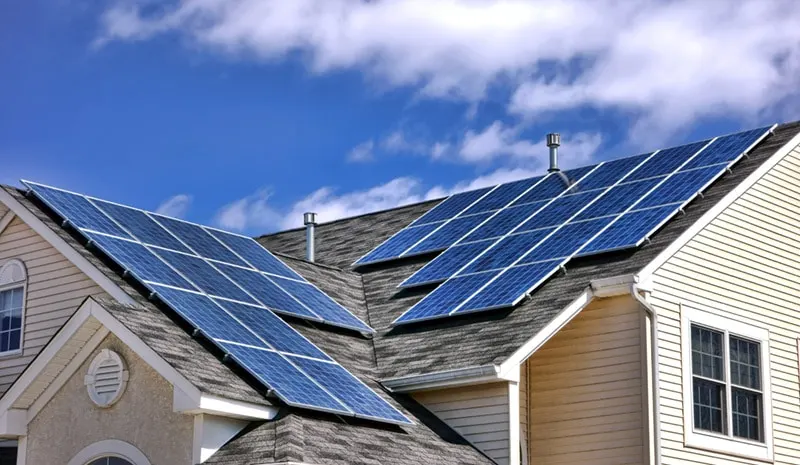If you’re a homeowner in California thinking about installing solar panels or a battery storage solution for your home, you’re probably wondering how much it will cost. The good news is that solar panels and batteries are becoming more affordable all the time, and California has some of the best solar incentives in the country.
We’ll discuss how to benchmark your solar panel cost in California. We’ll cover the factors that you should consider while choosing the right supplier, factors that impact system cost, how to optimize your solar and battery sizing so that you are not over spending on your solar and battery systems.
Choosing the Right solar and battery installer
When choosing an installer, it’s important to do your research and compare quotes from multiple companies. Here are a few things to look for a supplier:
Experience: Make sure the supplier you choose has strong experience installing solar systems in California.
Reputation: Check online reviews to see what other customers have to say about the supplier.
Insurance: Make sure the supplier is insured in case something goes wrong during the installation process.
Warranties: The solar panels, batteries and inverter should come with a warranty, as should the installation. Ask about product warranties and track record of installation in the US.
Financing options: Many suppliers offer financing options, which can make it easier to afford a solar system.
Comparison: Use platforms like Energy sage to compare quotes while taking into account the key factors mentioned above and through the rest of the article.
Factors that Impact Solar Storage System Cost
The size of your system: The larger your system, the more it will cost. However, a larger system will also produce more electricity, which can lead to greater savings on your utility bills.
The efficiency of your solar panels: More efficient solar panels produce more electricity per watt, which can save you money in the long run.
The type of solar inverter you choose: The solar inverter is the device that converts the DC electricity produced by your solar panels into AC electricity that can be used in your home. There are a variety of solar inverters on the market, and the cost can vary depending on the features and efficiency.
The cost of labor: The cost of labor can vary depending on the location of your home and the complexity of your installation. Locations like San Jose, Bay Area have experienced manpower that can help install high quality systems.
Factors that Impact Battery Energy Storage System Cost
The size of your battery: The larger your battery, the more it will cost. However, a larger battery will also store more energy, which can give you more backup power during a power outage.
The type of battery you choose: There are a variety of BESS on the market, and the cost can vary depending on the type of battery. Leading suppliers and products like Tesla Powerwall, LG ESS Home 8, LG RESU PRIME provide reliable products with strong track record and product warranty.
The cost of electricity: If electricity prices are high in your area, a battery energy storage system can be a more cost-effective investment. Locations like Bay Area, San Jose which come under PG & E have one of the highest electricity prices in the US and the return on investment in these areas are much better compared to others.
Your energy usage habits: If you have a high energy usage, a battery energy storage system can help you save money on your utility bills.
Your environmental goals: If you’re looking to reduce your carbon footprint, a battery energy storage system can help you do that.
How to Optimize Your Solar and Battery Sizing
Once you’ve considered the factors that impact solar system cost, you can start to optimize your solar and battery sizing. The goal is to size your system to produce enough electricity to meet your needs, while also minimizing your upfront costs.
Here are a few things to keep in mind when optimizing your solar and battery sizing:
Start by estimating your annual electricity usage: You can do this by looking at your past utility bills.
Consider your energy needs during peak usage times: If you have a lot of electric appliances that you use during the day, you’ll need a larger system to meet your needs.
Choose the right battery size for your needs: If you want to be able to power your home during a power outage, you’ll need a larger battery.
Factor in the cost of solar incentives: The federal solar tax credit and the CSIP can significantly reduce the cost of your solar system.
Performance and Warranties to Look Out for
When choosing solar panels and batteries, it’s important to consider the performance and warranties. Here are a few things to look for:
Panel efficiency: The more efficient the solar panel, the more electricity it will produce.
Panel warranty: The solar panel warranty should cover defects in materials and workmanship for a period of at least 25 years.
Battery capacity: The battery capacity should be sufficient to power your home during a power outage.
Battery warranty: The battery warranty should cover defects in materials and workmanship for a period of at least 10 years.
By following these tips, you can benchmark your solar panel cost in California and choose the right supplier and equipment for your needs. With a little research, you can save money on your utility bills and reduce your carbon footprint for years to come.

